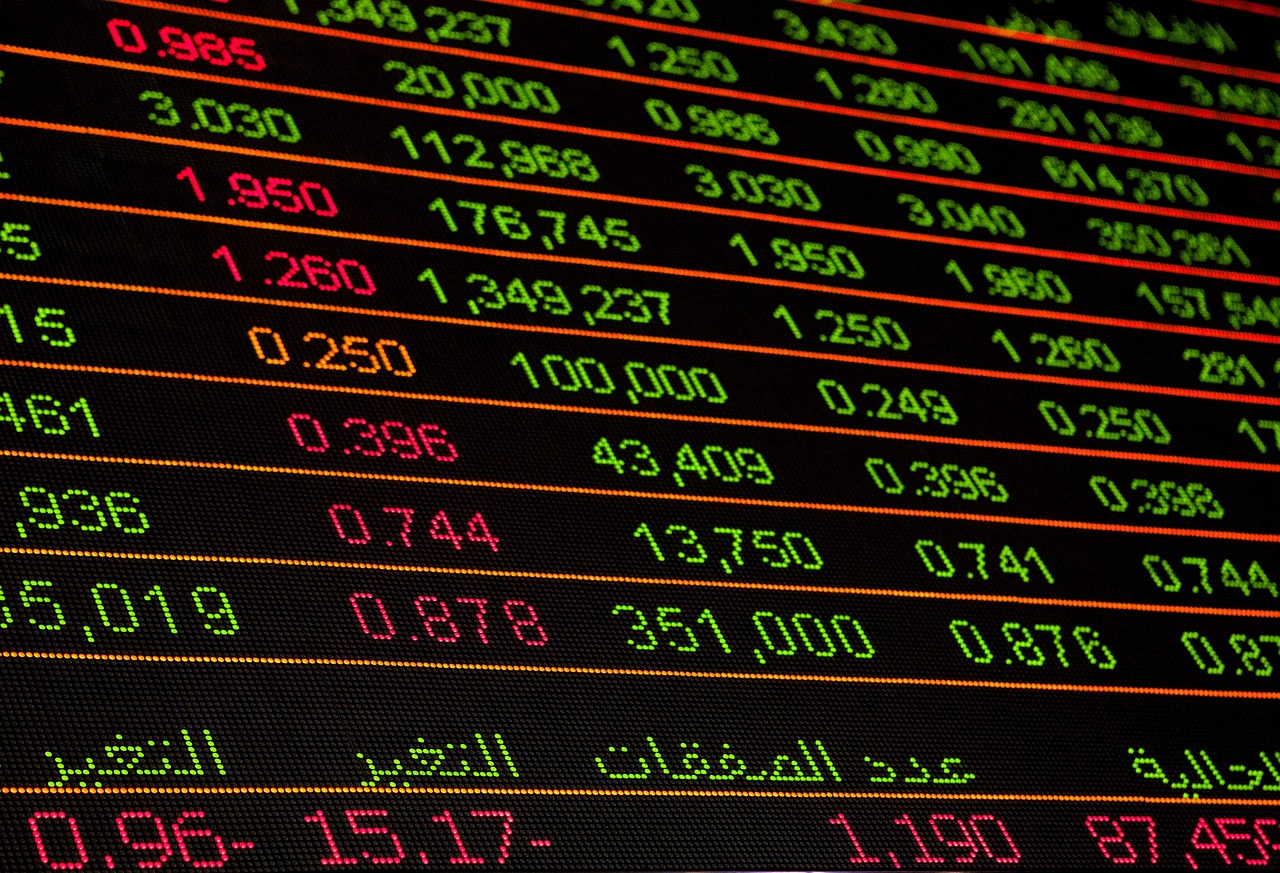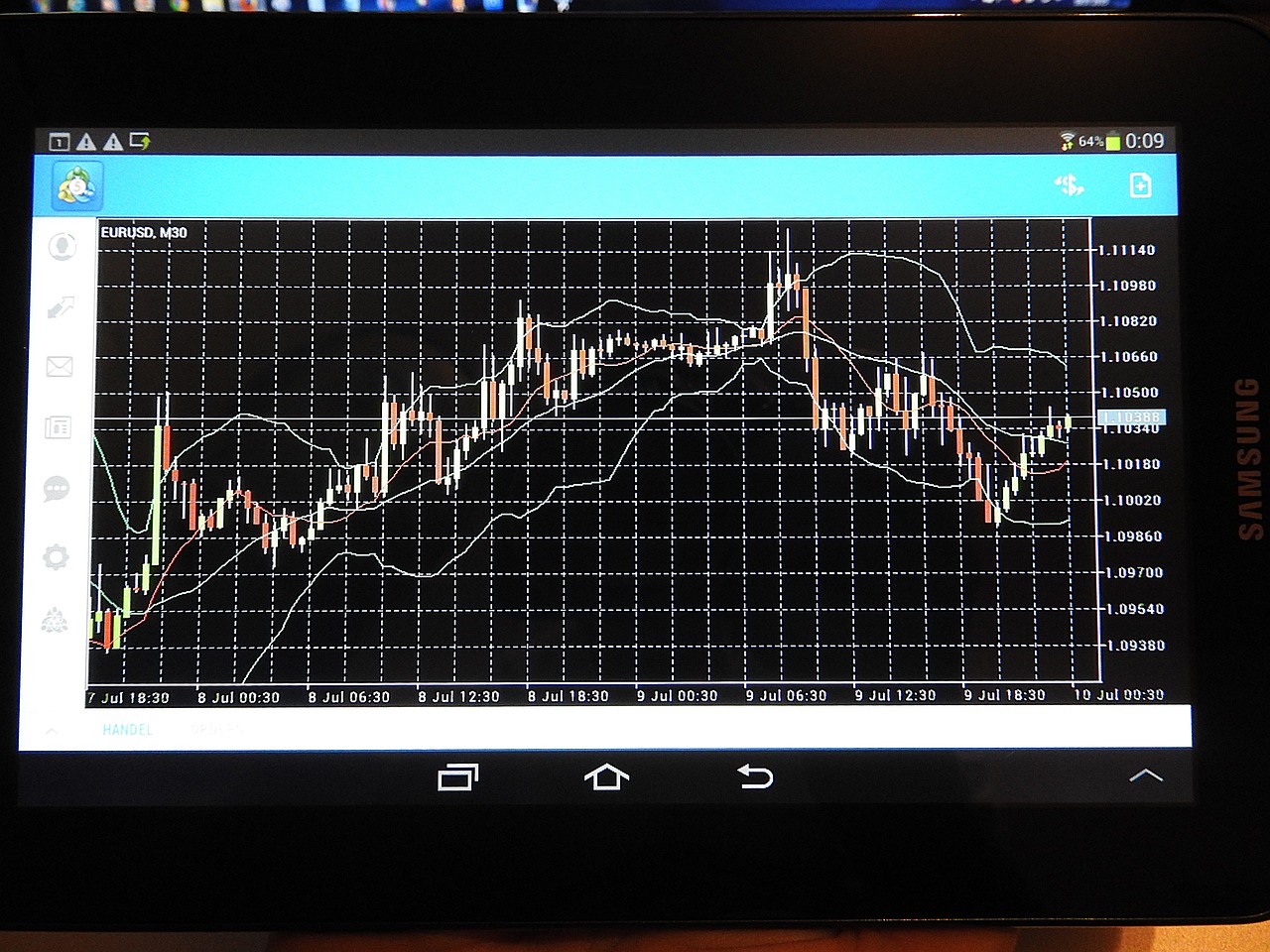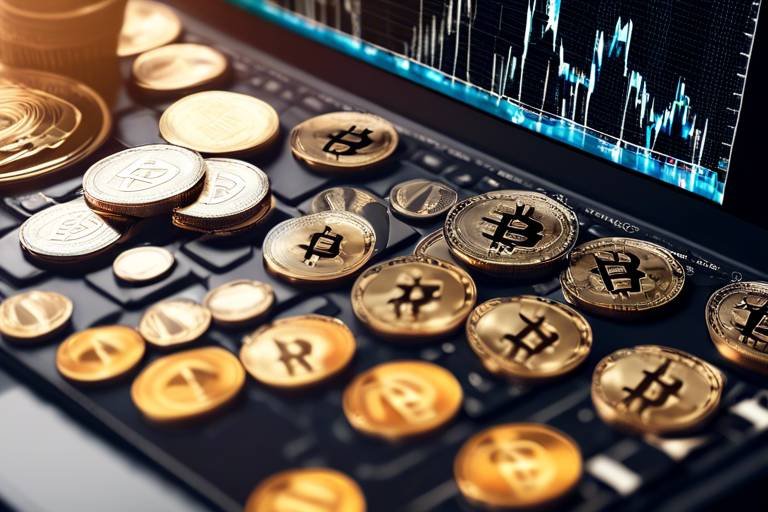Understanding Market Liquidity in Cryptocurrencies
In the ever-evolving world of cryptocurrencies, understanding market liquidity is essential for both new and seasoned investors. So, what exactly is market liquidity? Simply put, it refers to how easily an asset, in this case, cryptocurrencies, can be bought or sold in the market without causing a significant impact on its price. Imagine trying to sell a rare collectible; if there are many buyers, you can sell it quickly and at a good price. However, if there are few interested buyers, you might have to lower your price or wait a long time to find someone willing to purchase it. This analogy perfectly illustrates the concept of liquidity in the crypto market.
Liquidity is not just a buzzword; it plays a pivotal role in determining how smoothly transactions can occur on cryptocurrency exchanges. High liquidity means that there are many active participants in the market, leading to more stable prices and faster transaction times. Conversely, low liquidity can create a chaotic environment where prices fluctuate wildly, making it challenging for traders to execute their strategies effectively. In essence, understanding market liquidity is like having a compass in a dense forest; it guides you through the complexities of trading and investment.
Moreover, liquidity is intertwined with several factors, including trading volume, market capitalization, and the number of active participants in the market. Each of these elements contributes to the overall liquidity landscape, and analyzing them can provide crucial insights into market behavior. For instance, a sudden spike in trading volume might indicate growing interest in a particular cryptocurrency, suggesting that liquidity is improving. On the other hand, a decline in trading volume could signal potential liquidity issues, prompting traders to tread carefully.
As we delve deeper into the intricacies of market liquidity, it becomes evident that it’s not just about numbers; it's about understanding the psychology of the market. Traders and investors alike must be aware of the underlying factors that influence liquidity to make informed decisions. By grasping these concepts, they can better navigate the turbulent waters of the cryptocurrency market, ensuring they remain ahead of the curve. In the subsequent sections, we will explore the various aspects of market liquidity, including its importance, the factors that affect it, and its implications for traders.

The Importance of Market Liquidity
Market liquidity is the lifeblood of any trading environment, especially in the fast-paced world of cryptocurrencies. Imagine trying to sell a popular concert ticket in a crowded venue; the more people interested in buying, the easier it is to sell that ticket quickly and at a fair price. Similarly, in crypto markets, liquidity ensures that traders can execute their buy and sell orders swiftly without causing significant price fluctuations. This is vital for maintaining price stability and ensuring that the market functions efficiently.
When liquidity is high, it means that there are plenty of buyers and sellers available, which leads to smoother transactions. Conversely, low liquidity can create a chaotic trading environment where prices are more volatile, and trades take longer to execute. This unpredictability can be daunting for traders, especially those who rely on quick decision-making to capitalize on market movements. Therefore, understanding liquidity is essential not just for seasoned investors but also for newcomers who want to navigate the crypto landscape effectively.
Moreover, liquidity affects the cost of trading. In a liquid market, the spread—the difference between the buying and selling price—is typically narrower, meaning traders can enter and exit positions with lower costs. This is particularly advantageous for day traders and high-frequency traders who make multiple transactions throughout the day. On the other hand, in a less liquid market, wider spreads can eat into profits, making it less appealing for traders looking to maximize their returns.
In addition to cost implications, liquidity is also a key indicator of market health. A market with consistently high liquidity often signals investor confidence and interest, which can attract more participants. This self-reinforcing cycle can lead to greater market depth and further liquidity. Conversely, a market with low liquidity may deter new investors, leading to a downward spiral that can negatively impact prices.
To sum it up, the importance of market liquidity in cryptocurrencies cannot be overstated. It influences trading costs, market stability, and overall investor confidence. As traders and investors, understanding liquidity helps us make informed decisions and navigate the complexities of the crypto market with greater ease.
- What is market liquidity? Market liquidity refers to how easily assets can be bought or sold in the market without affecting their price.
- Why is liquidity important in trading? Liquidity is important because it ensures quick transactions, lower trading costs, and price stability.
- How can I assess liquidity in a cryptocurrency? You can assess liquidity by looking at trading volume, the depth of the order book, and the spread between buy and sell prices.

Factors Affecting Liquidity
When we talk about liquidity in the cryptocurrency world, we're diving into a complex pool of variables that can significantly impact how easily assets can be bought or sold without causing drastic price changes. So, what exactly influences this liquidity? Well, it boils down to a few key factors that every trader and investor should be aware of. Understanding these elements is like having a map in a treasure hunt; it guides you through the unpredictable waters of the crypto market.
First and foremost, let's discuss trading volume. This is the lifeblood of any market, and in the realm of cryptocurrencies, high trading volume typically signals greater liquidity. Think of it this way: if a lot of people are buying and selling a particular cryptocurrency, it means there are plenty of orders to match against, which helps stabilize prices. Conversely, low trading volume can create a bumpy ride, where prices can swing wildly with just a few trades. Keeping an eye on trading volume trends is essential for predicting potential liquidity shifts, almost like watching the tide come in and out.
Another critical factor is the market capitalization of a cryptocurrency. Market cap is calculated by multiplying the total supply of coins by the current price per coin. Larger market caps generally correlate with better liquidity. Why? Because bigger projects tend to attract more investors, which means more buy and sell orders are available. This increased activity allows traders to enter and exit positions more smoothly, reducing the risk of significant price fluctuations. It’s like having a larger pool to swim in; the more space you have, the easier it is to move around without splashing too much water.
Next up is the number of active participants in the market. The more traders there are, the more liquidity there will be. Imagine a bustling marketplace filled with buyers and sellers; the more people there are, the easier it is to find someone willing to trade. A vibrant community of active participants contributes to the overall health of the market, enabling quicker transactions and better price stability. On the flip side, if the market is quiet with few active traders, liquidity can dry up faster than a puddle in the sun.
Lastly, we can’t ignore the order book depth. The depth of an order book provides a snapshot of the buy and sell orders at various price levels. A deeper order book usually indicates higher liquidity because it shows that there are numerous orders waiting to be filled. When traders place large orders, they want to ensure that there are enough counterparties to execute those trades without moving the market too much. A shallow order book, however, can lead to significant price movements with relatively small trades, which can be a nightmare for anyone trying to execute a strategy.
In summary, understanding the factors affecting liquidity—trading volume, market capitalization, number of active participants, and order book depth—can empower traders and investors to make informed decisions. It’s like piecing together a puzzle; when you see the full picture, you can navigate the market more effectively. So, next time you’re analyzing a cryptocurrency, keep these factors in mind to gauge its liquidity potential.
- What is market liquidity? Market liquidity refers to how easily an asset can be bought or sold in the market without affecting its price.
- Why is liquidity important for traders? High liquidity allows for better price execution and minimizes the risk of slippage, making it easier to enter and exit positions.
- How can I measure the liquidity of a cryptocurrency? You can assess liquidity by examining trading volume, market capitalization, order book depth, and the number of active participants.

Trading Volume
When we talk about in the cryptocurrency world, we're essentially discussing the total amount of a specific cryptocurrency that has been traded over a given period. Imagine it as the heartbeat of the market; the stronger and more consistent the heartbeat, the healthier the market is. High trading volume often indicates that a cryptocurrency is actively being bought and sold, which can lead to greater liquidity. This, in turn, allows for quicker transactions at more stable prices.
But why should you care about trading volume? Well, if you're a trader or an investor, understanding volume trends can be a game-changer. For instance, if you notice a spike in trading volume for a particular cryptocurrency, it might signal that something significant is happening—perhaps a new development, a partnership, or even a market trend that’s catching fire. Conversely, a sudden drop in volume might suggest that interest is waning, and that could be a red flag for your investments.
To illustrate this point further, let’s consider a few key aspects of trading volume:
- Market Sentiment: High trading volume can reflect positive sentiment around a cryptocurrency, indicating that traders are confident in its performance.
- Price Stability: When trading volume is high, prices tend to be more stable. This stability is crucial for traders looking to execute large orders without causing significant price fluctuations.
- Liquidity Prediction: By analyzing historical trading volume data, you can often predict future liquidity shifts. For example, if a cryptocurrency has consistently high trading volume, it’s likely to maintain its liquidity.
Now, let’s dive into some numbers. Here’s a simple table comparing the trading volumes of three popular cryptocurrencies:
| Cryptocurrency | 24-Hour Trading Volume (in USD) |
|---|---|
| Bitcoin (BTC) | $30 Billion |
| Ethereum (ETH) | $15 Billion |
| Ripple (XRP) | $1 Billion |
This table highlights how trading volume can vary dramatically between different cryptocurrencies. Bitcoin, for instance, consistently leads the pack with an impressive trading volume, which is a strong indicator of its liquidity. On the other hand, Ripple's lower trading volume suggests that it may not be as liquid, which could pose challenges for traders looking to execute large trades without affecting the price.
In conclusion, keeping an eye on trading volume is essential for anyone involved in the cryptocurrency market. It’s not just about buying low and selling high; understanding how much of a cryptocurrency is changing hands can provide you with invaluable insights into market trends and potential price movements. So, the next time you’re considering an investment, remember to check the trading volume—it might just be the key to your success!
Q: What is trading volume in cryptocurrency?
A: Trading volume refers to the total amount of a cryptocurrency that has been traded during a specific time period, often measured over 24 hours. It indicates how actively a cryptocurrency is being bought and sold.
Q: Why is high trading volume important?
A: High trading volume typically indicates better liquidity, allowing for faster transactions at more stable prices. It also reflects market sentiment and can signal potential price movements.
Q: How can I track trading volume?
A: Trading volume can be tracked on various cryptocurrency exchanges and financial news websites that provide real-time data on market activity.
Q: Does low trading volume mean I should avoid a cryptocurrency?
A: Not necessarily. While low trading volume can indicate less liquidity and higher price volatility, it can also present opportunities. However, caution is advised when trading low-volume assets.

Market Trends
Market trends in the cryptocurrency space are like the pulse of the financial ecosystem; they reveal the underlying health and direction of the market. When we talk about market trends, we're essentially discussing the patterns and movements that can be observed over time. These trends can be bullish, indicating rising prices, or bearish, suggesting a downturn. Understanding these trends is crucial for investors and traders alike, as they can significantly influence liquidity levels and trading strategies.
Every trader knows that identifying market trends early can be the difference between a profitable trade and a missed opportunity. For instance, during a bullish trend, where prices are consistently climbing, liquidity tends to increase as more participants jump in, hoping to ride the wave of rising prices. Conversely, in a bearish market, liquidity can dry up as traders become hesitant to engage, fearing further losses. This dynamic nature of market trends makes it essential for anyone involved in cryptocurrency trading to stay informed and adaptable.
One of the key indicators of market trends is the trading volume. High trading volume often accompanies significant price movements, signaling strong interest and participation in the market. For example, if a cryptocurrency experiences a sudden spike in trading volume, it might indicate that a bullish trend is gaining momentum. Traders should keep an eye on these volume spikes, as they can provide early signals of potential liquidity shifts.
Furthermore, analyzing historical price data can help in spotting recurring patterns. For instance, certain cryptocurrencies may exhibit seasonal trends, where prices tend to rise or fall during specific times of the year. By studying these historical trends, traders can better predict future movements and adjust their strategies accordingly. To illustrate, consider the following table that summarizes typical market behaviors based on historical trends:
| Trend Type | Characteristics | Liquidity Impact |
|---|---|---|
| Bullish | Rising prices, increased buying activity | Higher liquidity |
| Bearish | Falling prices, increased selling activity | Lower liquidity |
| Sideways | Stable prices, little movement | Moderate liquidity |
Moreover, keeping track of news and events that can influence market sentiment is vital. Major announcements, regulatory changes, or technological advancements can lead to sudden shifts in market trends. For instance, if a well-known cryptocurrency exchange announces a new feature or partnership, it could spark a bullish trend, resulting in increased liquidity as traders rush to capitalize on the news. Therefore, staying updated with the latest industry developments is essential for making informed trading decisions.
In conclusion, understanding market trends is not just about observing price movements; it’s about grasping the broader implications these trends have on liquidity and trading strategies. By paying attention to trading volume, historical patterns, and external influences, traders can position themselves to take advantage of emerging opportunities in the ever-evolving cryptocurrency landscape.

Order Book Depth
The concept of is fundamental to understanding liquidity in the cryptocurrency market. Essentially, the order book is a digital ledger that displays all outstanding buy and sell orders for a particular cryptocurrency. It acts like a window into the market, showing the supply and demand dynamics in real-time. A deeper order book, which means there are more buy and sell orders at various price levels, typically indicates higher liquidity. This higher liquidity is advantageous for traders because it allows them to execute larger trades without significantly impacting the price.
To illustrate, imagine you’re at a bustling farmer's market. If there are many stalls selling apples at various prices, you can easily find a seller willing to trade without having to haggle too much. Conversely, if there’s only one stall selling apples, you might have to pay a premium or wait until they’re ready to sell at a lower price. This analogy perfectly encapsulates how order book depth works in trading. The more options available, the easier it is to buy or sell without affecting the market price.
Furthermore, the order book is divided into two main sections: the bid side, which shows the highest prices buyers are willing to pay, and the ask side, which shows the lowest prices sellers are willing to accept. The difference between these two prices is known as the spread. A narrower spread typically indicates a more liquid market, while a wider spread can signal lower liquidity, making it more challenging for traders to execute their orders efficiently.
| Order Type | Description |
|---|---|
| Bid Orders | Orders placed by buyers indicating the price they are willing to pay. |
| Ask Orders | Orders placed by sellers indicating the price they are willing to accept. |
| Market Orders | Orders to buy or sell immediately at the current market price. |
| Limit Orders | Orders to buy or sell at a specific price or better. |
Traders should keep a close eye on the order book depth as it can change rapidly, especially during periods of high volatility. Sudden market movements can lead to a thinning of the order book, resulting in decreased liquidity. This scenario can create challenges for traders who are looking to enter or exit positions quickly. By analyzing the order book depth, traders can gauge market sentiment and make more informed decisions about their trades.
- What is an order book? An order book is a list of buy and sell orders for a specific cryptocurrency, showing the interest in the market at various price levels.
- How does order book depth affect trading? A deeper order book indicates higher liquidity, allowing for smoother and quicker trades with less price impact.
- What is the spread in trading? The spread is the difference between the highest bid price and the lowest ask price in the order book.
- How can I analyze order book depth? Traders can use various trading platforms that provide real-time order book data to analyze depth, bid-ask spreads, and overall market sentiment.

Market Capitalization
Market capitalization, often referred to as "market cap," is a key metric in the cryptocurrency world that indicates the total value of a cryptocurrency. It is calculated by multiplying the current price of the cryptocurrency by its circulating supply. This simple formula can provide profound insights into the liquidity and overall health of a cryptocurrency. For instance, a higher market cap typically signifies a more established and stable asset, which can lead to improved liquidity. In contrast, lower market cap cryptocurrencies may experience more volatility and less liquidity, making them riskier for investors.
Understanding market capitalization is essential for traders and investors alike. It allows them to gauge the potential growth and stability of a cryptocurrency. Here’s a breakdown of how market capitalization influences liquidity:
- Higher Market Cap Higher Liquidity: Generally, cryptocurrencies with larger market caps, such as Bitcoin and Ethereum, tend to have more trading volume and a more active user base. This means that trades can be executed more efficiently without significantly impacting the price.
- Lower Market Cap Higher Volatility: On the flip side, cryptocurrencies with smaller market caps can be more susceptible to price swings. This volatility can lead to lower liquidity, as fewer participants are willing to trade at certain price levels.
To illustrate this concept further, consider the following table that compares the market capitalization of three different cryptocurrencies:
| Cryptocurrency | Market Cap (in USD) | Liquidity Level |
|---|---|---|
| Bitcoin (BTC) | $800 billion | High |
| Ethereum (ETH) | $400 billion | High |
| Shiba Inu (SHIB) | $6 billion | Moderate |
As shown in the table, Bitcoin and Ethereum, with their large market caps, exhibit high liquidity, allowing for smoother transactions. In contrast, Shiba Inu, despite its popularity, has a significantly lower market cap, which can result in less liquidity and higher price volatility. This disparity highlights the importance of considering market cap when assessing a cryptocurrency's liquidity.
In summary, market capitalization is not just a number; it’s a vital indicator of a cryptocurrency's market position and liquidity. By understanding how market cap affects liquidity, traders can make more informed decisions, minimizing risks and maximizing potential gains. So, the next time you’re diving into the cryptocurrency market, remember to keep an eye on the market cap—it could be your secret weapon in navigating this exciting yet unpredictable landscape.
Q1: How is market capitalization calculated?
A1: Market capitalization is calculated by multiplying the current price of a cryptocurrency by its circulating supply.
Q2: Why is market capitalization important?
A2: Market capitalization helps investors gauge the stability and growth potential of a cryptocurrency, influencing their trading decisions.
Q3: Does a higher market cap always mean better liquidity?
A3: Generally, yes. Higher market cap cryptocurrencies tend to have more trading volume and a larger user base, leading to better liquidity.
Q4: Can low market cap cryptocurrencies be profitable?
A4: While they can offer higher returns due to volatility, they also come with increased risks, including lower liquidity and potential price swings.

Implications for Traders
Understanding market liquidity is not just a theoretical exercise; it has real-world implications for traders navigating the often turbulent waters of cryptocurrency trading. High liquidity generally means that traders can execute their orders quickly and at stable prices, which is crucial for those looking to capitalize on short-term price movements. Imagine trying to sell a rare collectible; if there are plenty of buyers, you can sell it quickly at a good price. However, if there are only a few interested buyers, you might have to settle for a lower price or wait longer to find a buyer. This analogy holds true in the crypto market as well.
When liquidity is high, traders can enter and exit positions with ease. This means they can react swiftly to market changes, a vital aspect in a space known for its volatility. On the flip side, low liquidity can create significant challenges. For instance, when liquidity is scarce, a trader's order may not be filled at the desired price, leading to what's known as slippage. Slippage can significantly eat into profits, especially for those employing high-frequency trading strategies. Therefore, being aware of liquidity levels can help traders mitigate potential losses and enhance their trading strategies.
Moreover, the implications of liquidity extend beyond just individual trades. High liquidity often correlates with lower trading costs. In a liquid market, the difference between the buying price (ask) and selling price (bid) is usually narrower, which means traders can save on costs. Conversely, in a low liquidity environment, the bid-ask spread widens, increasing the cost of executing trades. This can be particularly detrimental for day traders who rely on making multiple trades throughout the day.
In addition, traders should consider liquidity conditions when developing their trading strategies. For example, during periods of high liquidity, a trader might opt for aggressive strategies, aiming for quick profits from small price movements. However, during times of low liquidity, it might be wiser to adopt a more conservative approach, focusing on long-term positions rather than trying to capitalize on rapid fluctuations. Understanding these dynamics can provide traders with a competitive edge in a market that is constantly evolving.
To summarize, liquidity is a double-edged sword in the cryptocurrency market. While high liquidity enables seamless trading and lower costs, low liquidity can lead to slippage and increased trading expenses. Traders must remain vigilant and adapt their strategies based on the liquidity landscape to optimize their performance and minimize risks.
- What is market liquidity? Market liquidity refers to the ease with which an asset can be bought or sold in the market without affecting its price.
- Why is liquidity important for traders? High liquidity allows for quick execution of trades at stable prices, reducing the risk of slippage and minimizing trading costs.
- How can I assess liquidity in a cryptocurrency? You can assess liquidity by looking at trading volume, bid-ask spreads, and the depth of the order book.
- What is slippage, and how can it affect my trades? Slippage occurs when a trade is executed at a different price than expected, often due to low liquidity. It can lead to unexpected losses.

Slippage in Low Liquidity
When navigating the turbulent waters of cryptocurrency trading, one term that often surfaces is slippage. But what exactly does it mean, and why should traders be concerned about it, especially in low liquidity environments? Slippage refers to the difference between the expected price of a trade and the actual price at which the trade is executed. Imagine you’re at a bustling marketplace, ready to buy a rare item. You see it listed for $100, but when you finally make your purchase, the price has jumped to $110 because someone else snatched it up just before you. This is essentially what slippage does—it can turn a smooth transaction into a costly endeavor.
In the world of cryptocurrencies, slippage becomes especially pronounced during periods of low liquidity. When there aren’t enough buyers or sellers in the market, even a modest order can significantly impact the price. For instance, if a trader wants to sell a large quantity of a lesser-known altcoin, the lack of active participants can lead to a scenario where the selling price drops sharply as the order is executed. This can lead to unexpected losses, making it crucial for traders to be aware of the liquidity conditions before placing their trades.
To illustrate this, let’s consider an example with a hypothetical cryptocurrency, CryptoX. Assume that CryptoX has a current price of $50, and a trader wishes to sell 1000 units. If the order book shows that there are only small buy orders available, say for 100 units at $50, 200 units at $48, and 300 units at $47, the trader may end up selling their entire batch at an average price of $45 due to the lack of buyers willing to pay the original price. This scenario highlights how slippage can occur in low liquidity situations and emphasizes the importance of understanding market depth.
To mitigate slippage, traders can employ several strategies:
- Limit Orders: Instead of market orders, which execute at the best available price, using limit orders allows traders to set a specific price at which they are willing to buy or sell. This can help avoid the pitfalls of slippage.
- Trade During Peak Hours: Liquidity often fluctuates throughout the day. Trading during peak hours when more participants are active can reduce the risk of slippage.
- Analyze Order Book Depth: Before executing a trade, take a moment to analyze the order book. A deeper order book with more buy and sell orders can indicate a healthier market, which is less prone to slippage.
In conclusion, understanding slippage in low liquidity markets is essential for any trader looking to navigate the cryptocurrency landscape effectively. By being aware of how slippage works and employing strategies to minimize its impact, traders can protect their investments and enhance their overall trading experience.
What is slippage? Slippage is the difference between the expected price of a trade and the actual price at which it is executed, often occurring in low liquidity conditions.
How can I reduce slippage? You can reduce slippage by using limit orders, trading during peak market hours, and analyzing the order book depth before making trades.
Why is liquidity important in trading? Liquidity is crucial because it affects the ease of executing trades and the stability of prices. High liquidity typically leads to lower slippage and better price execution.

Trading Strategies
When it comes to navigating the turbulent waters of cryptocurrency trading, understanding liquidity is like having a compass that points you in the right direction. A trader’s success often hinges on their ability to develop effective strategies that take liquidity into account. So, what does this mean in practice? Well, let's dive into some key strategies that can help you optimize your trading experience.
First and foremost, one of the most fundamental strategies revolves around timing the market. By closely monitoring liquidity levels throughout the day, traders can identify optimal times to enter or exit positions. For instance, liquidity tends to peak during specific hours when trading volumes are highest, often coinciding with the opening of major financial markets. By aligning your trades with these peak times, you can minimize the risk of slippage and achieve better price execution.
Another important aspect of trading strategies is the use of limit orders. Unlike market orders, which execute immediately at the current market price, limit orders allow traders to set a specific price at which they are willing to buy or sell. This can be particularly beneficial in a low liquidity environment, where prices can fluctuate dramatically. By placing a limit order, you can avoid the pitfalls of slippage and ensure that you’re getting the price you want, rather than the price the market gives you.
Additionally, it's crucial to stay informed about market trends and news that can impact liquidity. For example, announcements regarding regulatory changes or major technological advancements can trigger significant trading activity, thereby affecting liquidity levels. By keeping your ear to the ground, you can position yourself to take advantage of these fluctuations. Consider setting up alerts for major news events or using analytical tools to track market sentiment.
Moreover, diversifying your trading portfolio is another effective strategy. By investing in a variety of cryptocurrencies, you can spread your risk and take advantage of different liquidity profiles. Some cryptocurrencies may have higher liquidity due to their market capitalization and trading volume, while others might be more volatile. A well-diversified portfolio can help mitigate risks associated with low liquidity in any single asset.
Lastly, it’s essential to continually evaluate and adjust your trading strategies based on the current market conditions. What works today might not work tomorrow, especially in the fast-paced world of cryptocurrencies. Regularly reviewing your trades and their outcomes can provide valuable insights, allowing you to refine your approach and adapt to changing liquidity dynamics.
In summary, effective trading strategies in the cryptocurrency market require a keen understanding of liquidity. By timing your trades wisely, utilizing limit orders, staying informed about market trends, diversifying your portfolio, and being adaptable, you can enhance your chances of success. Remember, in the world of crypto trading, knowledge is power, and liquidity is your ally!
- What is market liquidity? Market liquidity refers to the ease with which an asset can be bought or sold in the market without affecting its price.
- How does liquidity affect trading? High liquidity generally leads to more stable prices and quicker transactions, while low liquidity can result in slippage and increased trading costs.
- What are limit orders? Limit orders allow traders to specify the price at which they want to buy or sell an asset, helping to avoid slippage.
- Why is it important to monitor market trends? Monitoring market trends can help traders anticipate changes in liquidity and adjust their strategies accordingly.

Future of Cryptocurrency Liquidity
The future of cryptocurrency liquidity is as intriguing as it is uncertain. As the market continues to evolve, various factors will play a pivotal role in shaping the liquidity landscape. One of the most significant trends we can anticipate is the integration of advanced technologies, such as artificial intelligence (AI) and blockchain scalability solutions, which promise to enhance trading efficiency and liquidity. Imagine a world where transactions happen almost instantaneously, with minimal friction—this is the potential future that lies ahead.
Moreover, the increasing acceptance of cryptocurrencies by traditional financial institutions is expected to bolster liquidity. As banks and investment firms begin to embrace digital assets, we may witness a surge in trading activity. This influx of institutional capital could lead to a more robust market, characterized by deeper order books and tighter spreads. In essence, the more players in the game, the more vibrant the market becomes.
Another critical aspect to consider is the regulatory environment. As governments around the world develop clearer frameworks for cryptocurrency trading, we can expect a more stable market. This stability can attract more investors, further enhancing liquidity. For instance, countries that implement favorable regulations are likely to see increased trading volumes, as traders feel more secure in their investments.
Furthermore, the rise of decentralized finance (DeFi) platforms is revolutionizing how liquidity is perceived and utilized. These platforms allow users to lend, borrow, and trade without the need for intermediaries, thereby creating new avenues for liquidity. As DeFi continues to grow, it may complement traditional exchanges, providing traders with more options and flexibility. In fact, the liquidity provided by these platforms can sometimes surpass that of centralized exchanges, offering a compelling alternative for savvy traders.
To visualize the potential impact of these developments, consider the following table that outlines projected liquidity trends in the cryptocurrency market over the next few years:
| Year | Projected Trading Volume (in billions) | Market Capitalization (in trillions) | Liquidity Index |
|---|---|---|---|
| 2024 | 2,500 | 3.5 | 7.0 |
| 2025 | 4,000 | 5.0 | 8.5 |
| 2026 | 6,500 | 7.5 | 9.5 |
As we look to the future, it’s essential for traders and investors to stay informed about these evolving dynamics. By understanding the factors that influence liquidity, you can better position yourself to navigate the complexities of the market. Will you be ready to adapt to these changes, or will you be left behind in the fast-paced world of cryptocurrency?
- What is market liquidity? - Market liquidity refers to how easily assets can be bought or sold in the market without affecting their price.
- Why is liquidity important in cryptocurrencies? - Liquidity is crucial as it affects price stability and the ease of executing trades, allowing investors to enter and exit positions more efficiently.
- How can I assess the liquidity of a cryptocurrency? - You can assess liquidity by analyzing trading volume, market capitalization, and the depth of the order book.
- What is slippage and how does it relate to liquidity? - Slippage occurs when a trade is executed at a different price than expected, often due to low liquidity, which can increase trading costs.
Frequently Asked Questions
-
What is market liquidity in cryptocurrencies?
Market liquidity refers to how easily a cryptocurrency can be bought or sold without affecting its price. In simpler terms, it’s like having a bustling marketplace where you can quickly trade your goods without waiting for hours. High liquidity means you can enter and exit positions effortlessly, while low liquidity can create challenges.
-
Why is liquidity important for traders?
Liquidity is vital for traders because it impacts price execution and trading costs. Think of it as a smooth highway—high liquidity allows for fast transactions with minimal slippage, while low liquidity can feel like driving through a traffic jam, causing delays and unexpected costs.
-
What factors influence liquidity in the cryptocurrency market?
Several factors affect liquidity, including trading volume, market capitalization, and the number of active participants. High trading volume often signals greater liquidity, while a larger market capitalization generally indicates that a cryptocurrency is more liquid, making it easier to trade without drastic price changes.
-
How does trading volume affect liquidity?
Trading volume is a key indicator of liquidity. When trading volume is high, it usually means there are plenty of buyers and sellers, which helps maintain stable prices. Imagine a crowded market—more people mean more transactions and less waiting around!
-
What is slippage and how does it relate to liquidity?
Slippage occurs when a trade is executed at a different price than expected, often due to low liquidity. It’s like expecting to buy a coffee for $3 but finding out the price has jumped to $4 because there aren’t enough cups available. Understanding slippage can help traders avoid unexpected losses.
-
How can traders develop strategies considering liquidity?
Traders can enhance their profitability by developing strategies that account for liquidity conditions. This involves analyzing market trends and order book depth to choose the best entry and exit points. It’s like planning a road trip—knowing the best routes can save time and fuel!
-
What does the future hold for cryptocurrency liquidity?
The future of cryptocurrency liquidity is likely to evolve as the market matures. With advancements in technology and increasing adoption, liquidity could improve, making it easier for investors to navigate the dynamic landscape. Staying informed about potential trends is essential for making smart investment decisions.



















